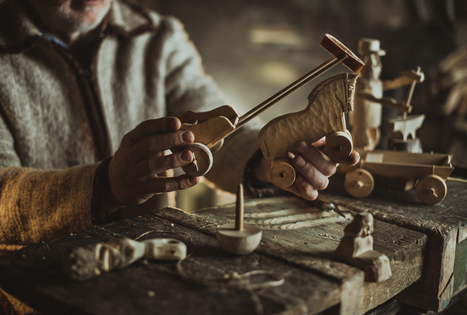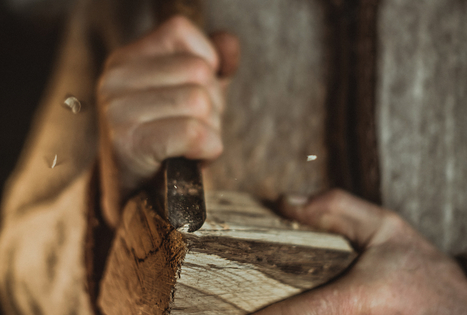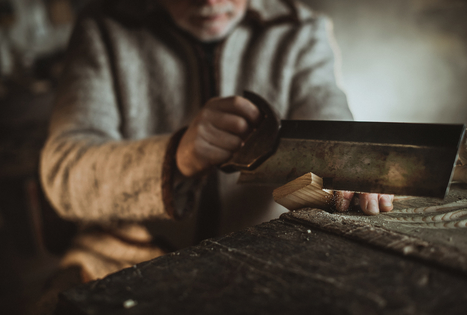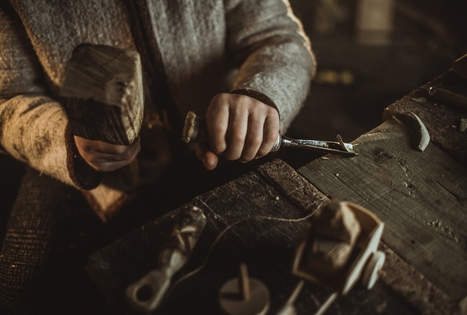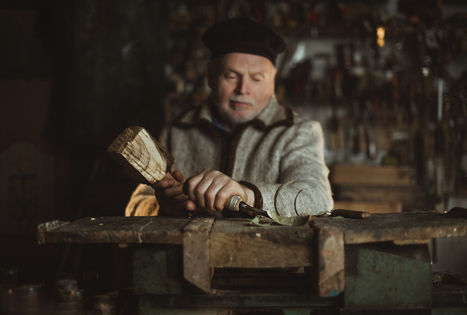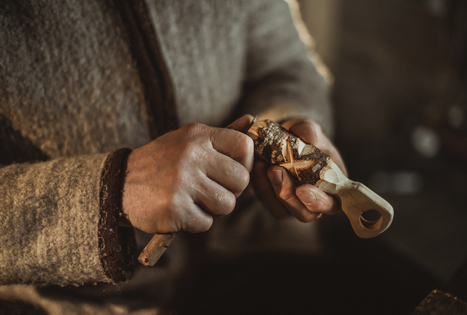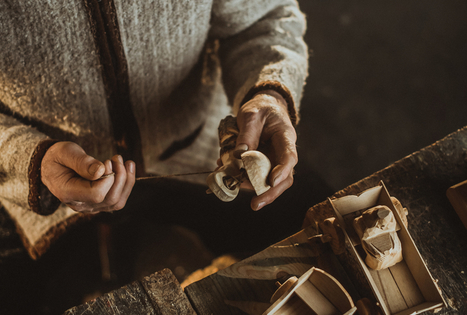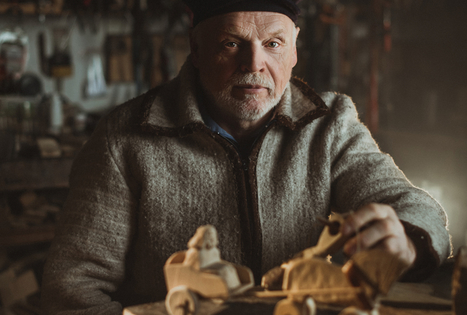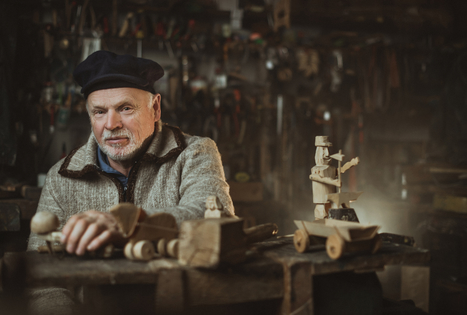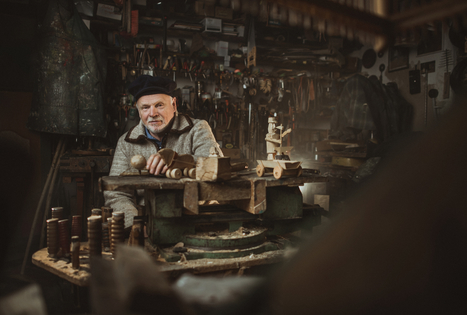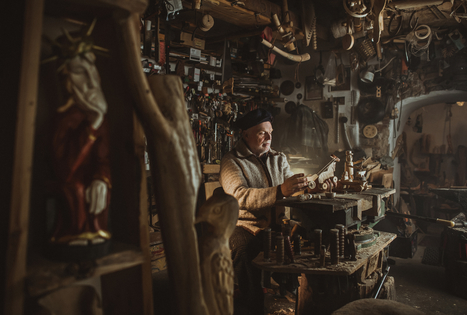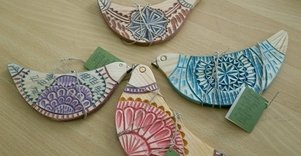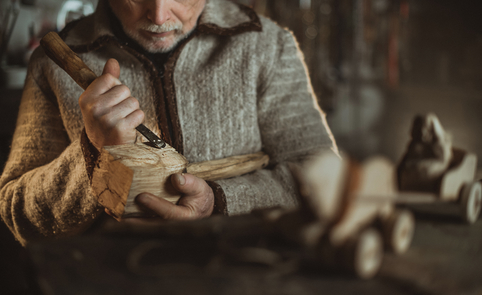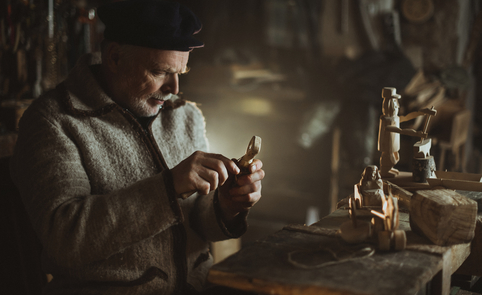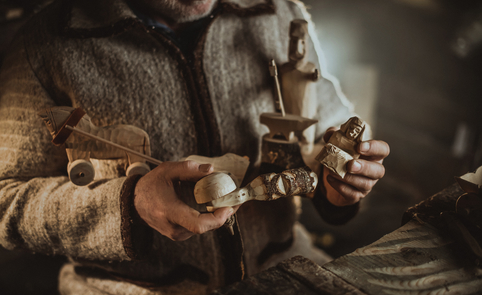Toys used to be made by various artisans: potters, tailors, knitters, joiners or carpenters. There was therefore no single toy maker as such. The main toy makers were the children themselves or their loving parents.
From whirligigs to kaleidoscopes
The earliest toys date back to 4000 BC. However, they did not come about solely to meet children’s need to play. Since ancient times, people made human and animal figurines because they believed in their magical power. Some of them were worn as amulets, while others were used to decorate the home or as part of religious ceremonies. It was only much later that figurines lost their former significance and become a plaything for children.
According to literary sources, the oldest surviving toys are from ancient Egypt (5th-3rd millennium BC). These include dolls made of wood, clay, fabric and leather, and stylised animal figurines. In ancient Greece and Rome, toys were mostly made of bone, terracotta, wood and amber. A variety of toys from these countries have made it to our time: dolls (with moving arms and legs), balls, toy soldiers, whirligigs, spinning tops, hobby horses, tiny toy containers and doll strollers.
In the Middle Ages, toys were mostly made by joiners. Whirligigs and rattles were particularly popular. Puzzles and rocking horses appeared in the 17th century. This was followed by more sophisticated toys, such as kaleidoscopes and doll houses with porcelain or wooden dolls.
For developing skills
Toys helped children learn about the environment and act consciously and independently. Some of the oldest Lithuanian toys are believed to be ceramic. These include toy horses, riders, ducks, lambs, cocks, peewits and goats, as well as whistles, and – less frequently – dolls. Fossils found by archaeologists include small children’s arrows, spearheads, hatchets, and other tools that date back to the Bronze Age. Their emergence coincides with the beginning of human civilisation. Ceramic toys were mainly made by old potters and their family members, as well as children and shepherds.
Articles made of bone and horn have been known in Lithuania since Palaeolithic times. An ancient Lithuanian musical instrument is a horn made from a long, curved goat horn. Whistles made from the bones of birds and animals were already being made in the Palaeolithic, as well as in the subsequent Stone and Metal Ages. During the Stone Age, whistles were made of plant stalks, straw, bird feathers and tree bark. More advanced musical toys were made by threading a cord through holes in a bone. Spinning the bones created a unique sound, hence the name ūžė, which was derived from the word ūžesys – murmur. It is speculated that toys were also made of wood, but there are no surviving examples due to the lack of durability.
Straw toys had a dual function – they kept children busy while also decorating the room. People would hang birds made of wood, straw or reed above cradles. These were small, lightweight, flat, carved figures with ornate fan-shaped wings and tails formed from slivers of wood. Christmas ornaments were also made from straw.
Dolls were a common toy for girls in Lithuania. Lithuanian dolls were usually made by children and their mothers and grandmothers. Though a lot of different materials were used to make dolls (wood, bark, clay, straw, herbs, vegetables), the most attractive were rag dolls made of cloth, sawdust, tow and wool yarn.
Children were taught to do adult work with tools and household items that were adapted for them. These include wooden hatchets, rakes, scoops and harrows. All of these tools were also used for playing.
Toys began to be produced in factories in the 19th century, but homemade toys were still the most common in villages. Only later did some joiners and wood carvers begin making more improved toys that looked nicer.
A craft that is still alive
There are far more toys these days than ever before. Children have a huge selection of mass-produced toys, but simple homemade ones – the kind that delighted children in the old days – are also in demand, so this craft is still alive. Currently, there are 38 certified artisans in Lithuania who make toys from wood, clay, fabric and straw.

